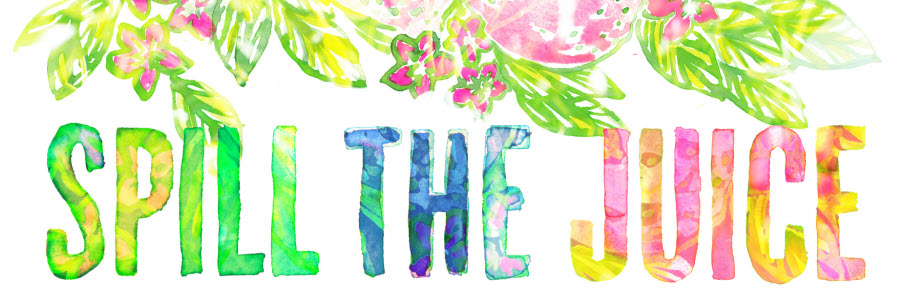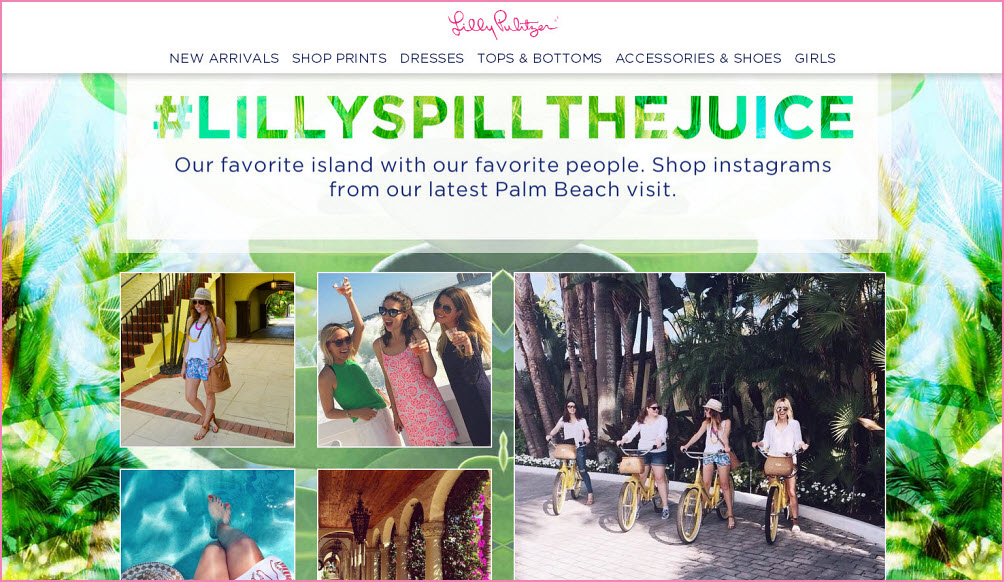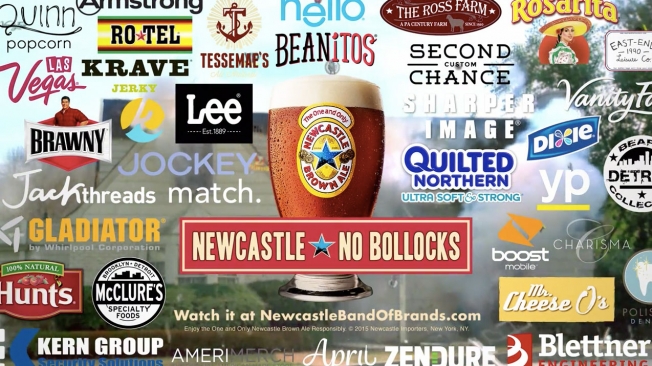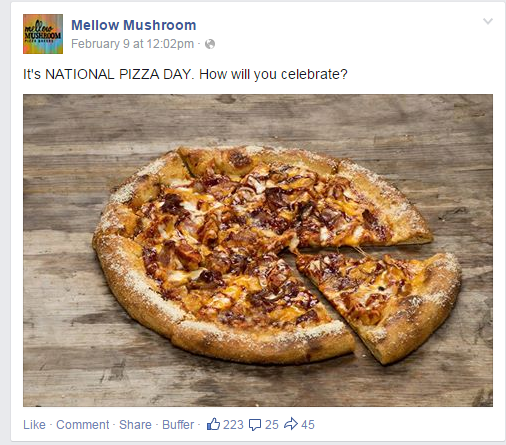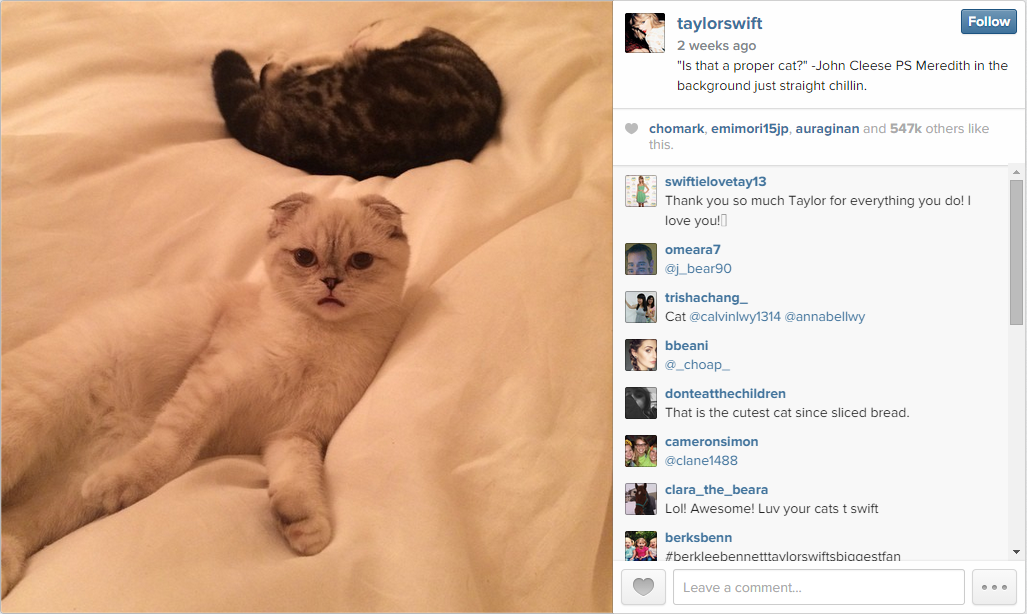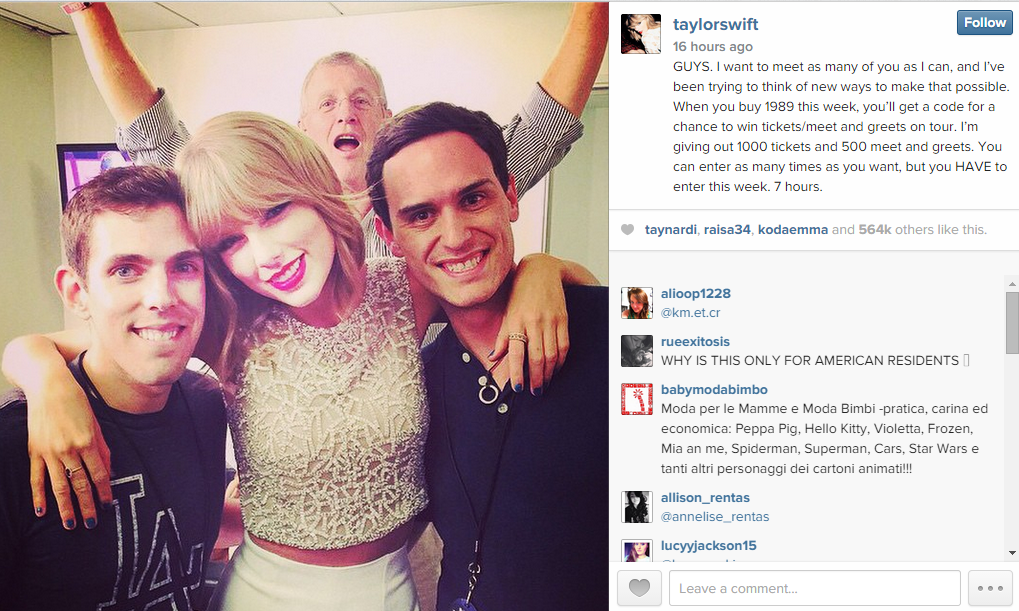Recently, I went to visit some friends in Rochester, N.Y.
While waiting for my flight out there, I started browsing Facebook on my phone. After perusing a few status updates and pet pictures, I landed on Ray-Ban’s Facebook page.
Amidst the questions and comments, I saw a really nice pair of Clubmasters I like. While waiting for the return flight, I decided to catch up on some tweets from people I follow.
Coincidentally, one person I follow tweeted about the same Clubmasters sunglasses I was looking at on Facebook a few days earlier and included a link.
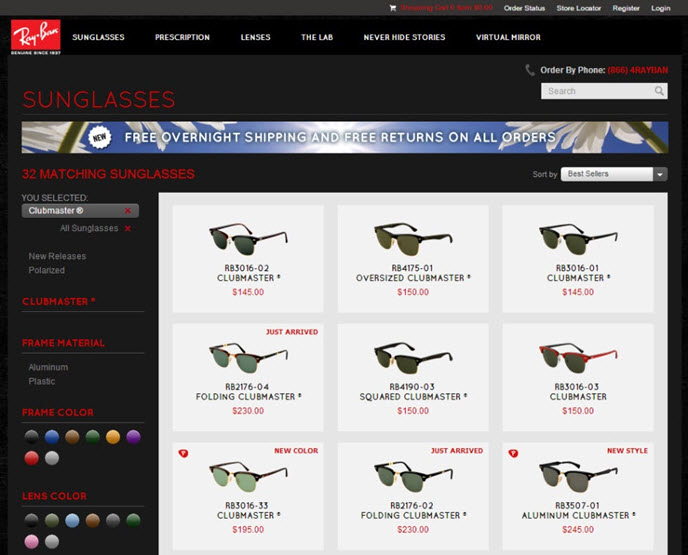 So, I clicked on it and was redirected to Ray-Ban’s e-commerce site. I spent a few minutes customizing pairs of Clubmasters to find the perfect combination to suit my tastes. I was tempted to order them, but it was time to start boarding – maybe some other time.
So, I clicked on it and was redirected to Ray-Ban’s e-commerce site. I spent a few minutes customizing pairs of Clubmasters to find the perfect combination to suit my tastes. I was tempted to order them, but it was time to start boarding – maybe some other time.
A week later, I noticed a PPC ad in my browser for Ray-Ban. I clicked on the ad, visited its site again, and checked out a video on “Clubmasters Remastered.” I was about to order them for a second time when the phone rang. A few friends wanted to meet up at the Lemon Bar, a favorite dive for Jacksonville Beach locals.
After a few margaritas, I got a wild hair and decided to finally purchase those Clubmasters. I got home and plopped down in front of my desktop computer, navigated to the e-commerce site I visited earlier, and bought those suckers!
So goes the saga of the multidigital channel user and multidevice user, for that matter. What a mess!
Is accurate attribution even possible?
We have entered an era that presents new challenges for marketers.
How do we accurately attribute credit for conversions with so many possibilities? When it comes to crediting digital channels, a number of attribution models exist that can provide clarity. However, when talking about social media, some models are better at accomplishing this than others.
For example, social media is generally not a last click before a conversion.
Therefore, basing a marketing budget solely upon this method would undervalue the contribution of social media to the conversion process. Google Digital Marketing Evangelist Avinash Kaushik wrote an excellent blog post on attribution modeling, addressing these issues. He opined the Time Decay Attribution Model does a fairly good job above and beyond the last click, and I would agree.
Time decay assigns more credit to media that is closer in time to a conversion, rather than giving full credit to the touch point closest to a conversion as last-click does.
In the Ray-Ban example, instead of Facebook receiving zero credit for my purchase, it would receive at least some credit even though it was my first touch point. This gives a much more realistic picture of how users are engaging versus a last-click model. Of course, it is the lesser of evils, not immune to biases.
How should you attribute social media ROI?
Now that we have a pretty decent way of attributing credit to digital channels beyond last-click, the next challenge is finding a way to accurately quantify the monetary value of social media.
There are a number of businesses offering solutions on how to determine social media ROI. However, I am not aware of a totally foolproof method. It’s still like the wild west out there and one can become lost.
To provide some direction, I’ve reviewed white papers and other literature floating around in cyberspace, piecing together the most compelling elements into a set of steps to estimate social media ROI that goes a little further than the methods I’ve mentioned.
How does your social media stack up against paid channels?
The idea of analyzing social media’s value here is by indirectly comparing similar paid channels to social media first. It’s like assessing what the cost of a social media page would be if it were equivalent to a banner ad, for example. We might multiply the number of Facebook page impressions by the typical CPM of our banner ad campaigns to calculate cost.
A white paper I found offers six ways to measure social media and is responsible for that particular example, which I illustrate in Table 1 below.
The article does a great job of laying out this concept for a number of social media platforms. Other sources have expressed similar approaches. I cheekily refer to the whole of them as “vicarious values.” It’s not quite catchy as an acronym, but it encapsulates the main idea well enough.
Step #1. Determine the vicarious value of your social media channels
Table 1. Calculating the vicarious value for Facebook

It’s likely your business uses multiple social media sites, so you would need to account for the vicarious value of each social media platform to calculate total vicarious value.
For simplicity’s sake, let’s assume our only social media presence is on Facebook.
We can easily calculate social network revenue since Facebook’s vicarious value is the same as total vicarious value in this case.
Step #2. Determine how many time decay conversions are attributed to your social media channels
This is where time decay attribution comes in.
So, for our example, we used data were taken from the Google Analytics Model Comparison Tool found under the conversions navigation menu. Facebook is our only social media platform. We can go ahead and assume Social Network (Table 2, Row 5) means only Facebook.
Table 2. Facebook’s time decay conversions represented as Social Network
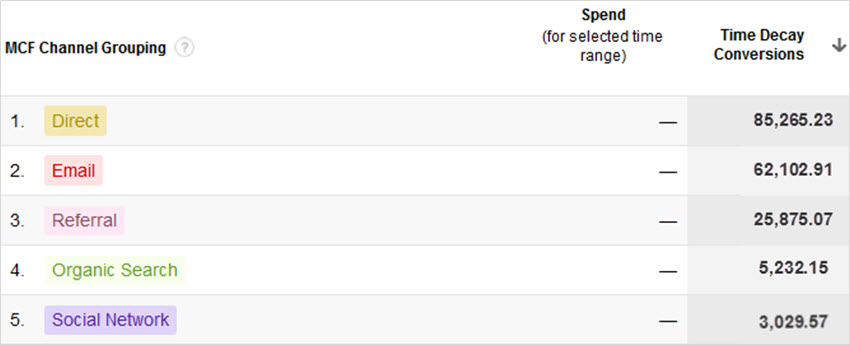
Under the Time Decay Conversions column, we see 3,029.57 conversions were attributable to Facebook.
Step #3. Calculate the revenue due to your social media channels
The conversions attributable to Facebook (Social Network) amounts to 2% of the total conversions as illustrated below.
Table 3. Channels as percent of total conversions
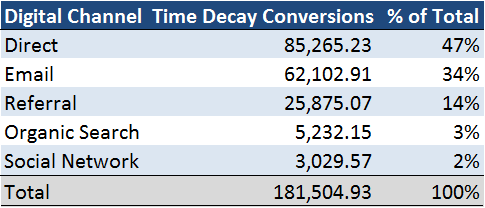
Step #4. Subtract the vicarious value from the revenue attributed to your social network
From here, you can calculate revenue due to Facebook by applying an average sale price for your goods or services to the number of conversions as seen in the formula provided in Table 4 below.
Now, do you remember that vicarious value we figured out in Step #1?
Here’s where it matters.
Table 4. Calculated estimate of ROI for Facebook

By subtracting the vicarious value (labeled cost here) from the total revenue due to your social network, the remainder gives you the profit.
From there, we have all of the pieces to estimate the ROI.
Read more…



